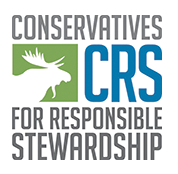
The AZCC has Failed Arizona Ratepayers
Years of stakeholder engagement and effort ends with a colossal failure
Four years ago, the five members of the Arizona Corporation Commission (AZCC) began looking into revising the state’s renewable-energy standard to better reflect the rapidly changing energy market and plummeting solar energy prices.
Various proposals for revising the standards have been under active consideration for the past two years, but after 10 public meetings, four staff drafts, thousands of public comments, and hundreds of hours put in by stakeholders, the entire effort fell apart without even so much as a vote at the AZCC meeting on July 30 (07/30/2020 AZCC Special Open Meeting, Energy Rules Vote).
The blame for this failure falls squarely on commissioners Dunn, Olson and Marquez Peterson.
Chairman Burns and Commissioner Kennedy had crafted a bi-partisan amendment that would increase the renewable energy standard to 50 percent by 2030, set a goal of 100 percent clean energy by 2050, and strengthen energy efficiency.

Increasing Arizona’s renewable energy standard would create thousands of jobs.
Their plan is very similar to the measure neighboring Nevada enacted last year with the support of every single Republican and Democrat lawmaker. That rare unanimity was achieved because low-cost solar will clearly save ratepayers a bundle on their electricity bill.
So why, after years of study and deliberation, did the three other commissioners feel they could not pass something similar for Arizona? Dunn and Marquez Peterson complained they had not had time to read the Burns/Kennedy amendment, which was available a week before the meeting.
Stakeholders, interestingly enough, did not have the same problem. They not only found time to read the amendment, they also had time to send letters in support of it to the commissioners.
It is also curious that, despite publicly calling for 100 percent clean energy by 2050, both Dunn and Marquez Peterson showed no interest in hammering out a plan they could support.
Commissioner Marquez Peterson’s role in this fiasco is a real head scratcher, given that she represents the Tucson Electric Power (TEP) service area, and TEP has committed to producing more than 70 percent of its energy with renewables by 2035.
Arizona Public Service (APS) has made similar commitments, but if these utilities were lobbying behind the scenes against stronger standards, it casts doubt on just how serious their renewable energy commitments actually are.
The fact that a longtime APS dark money ally, the Arizona Free Enterprise Club, popped up to register last-minute opposition to new standards, as did the Western States Petroleum Association, hints that APS is still wedded to costlier natural gas generation.
That would be a huge problem for Arizona ratepayers. New solar plants with storage for night generation are selling electricity for a fraction of the cost new or existing gas plants can. That is why neighboring states have been rushing to adopt strong renewable energy standards.
For monopoly utilities like APS and TEP, the cost of electricity does not matter as long as the AZCC is willing to approve rate increases that allow those costs to be passed on to ratepayers.
The Burns/Kennedy Amendment would have ensured that utilities live up to their renewable and clean energy commitments. It would have established near and medium term benchmarks to drive progress, and it would have further lowered energy costs for Arizonans through better energy efficiency.
But because Commissioners Dunn and Marquez Peterson could not be bothered to read the amendment—and seem unwilling to take any action, ratepayers will remain at the mercy of monopoly utilities that exist primarily to further enrich their investors.
Of course, with this debacle, not only are Arizonan’s losing out on the benefits of low cost solar, they are wasting tax dollars on a dysfunctional AZCC that is clearly not looking out for their interests.Cheap, reliable, and clean electricity is important in the best of times, but it becomes most critical in times like these, where we face fear, uncertainty, and economic hardship.

